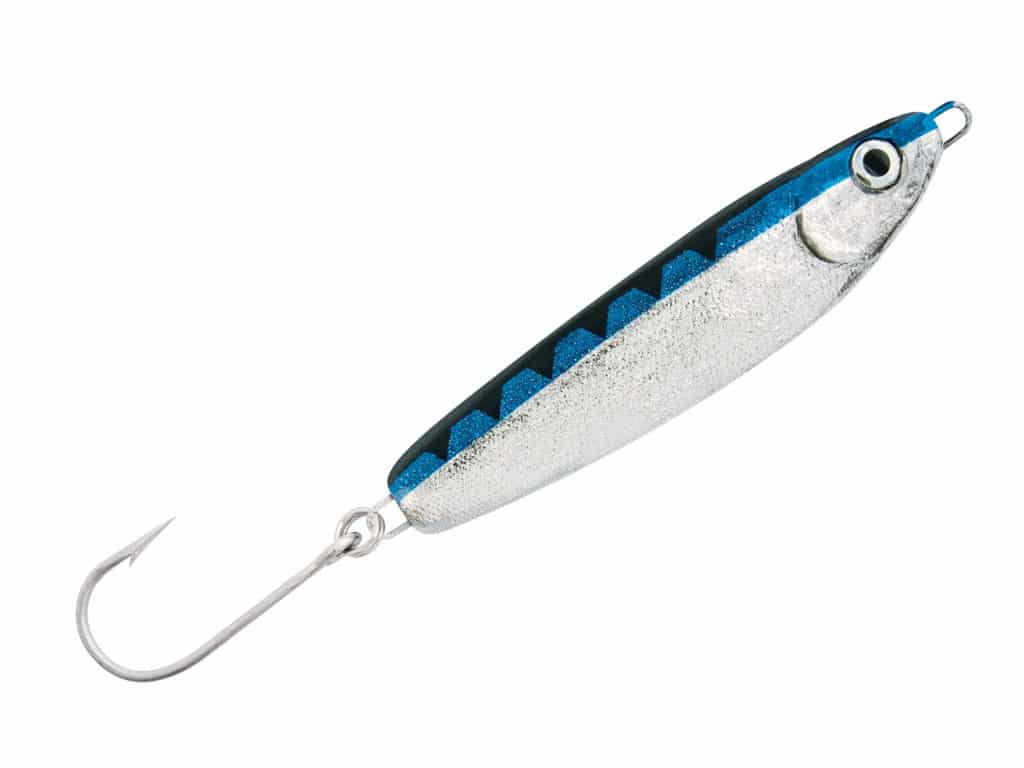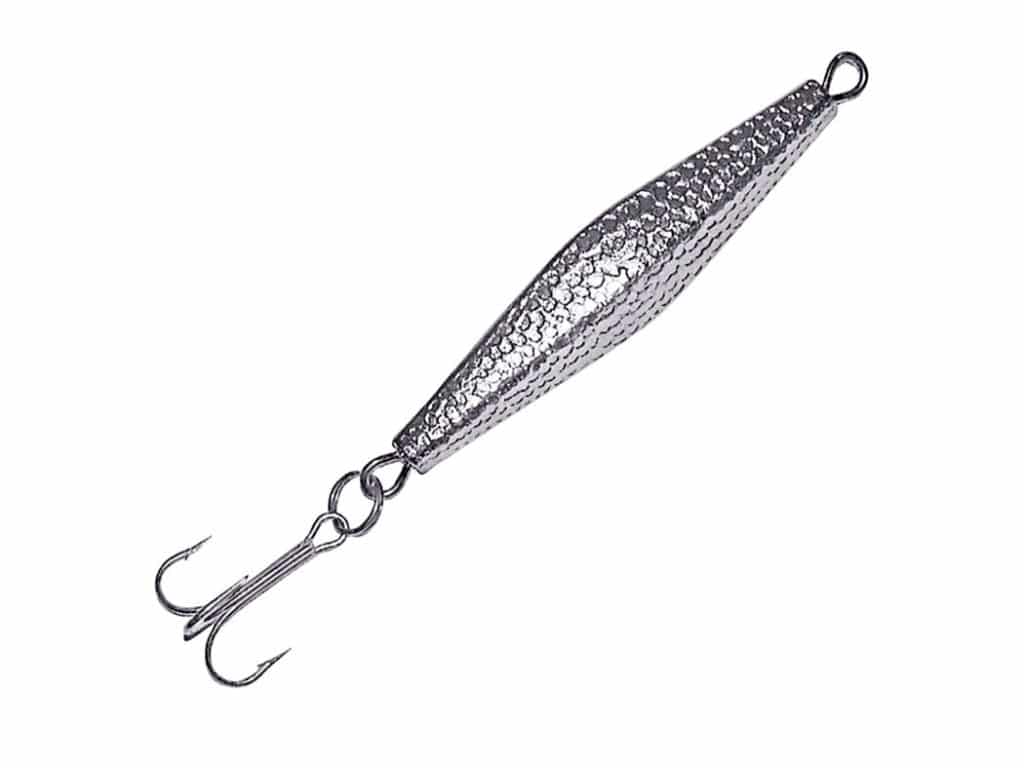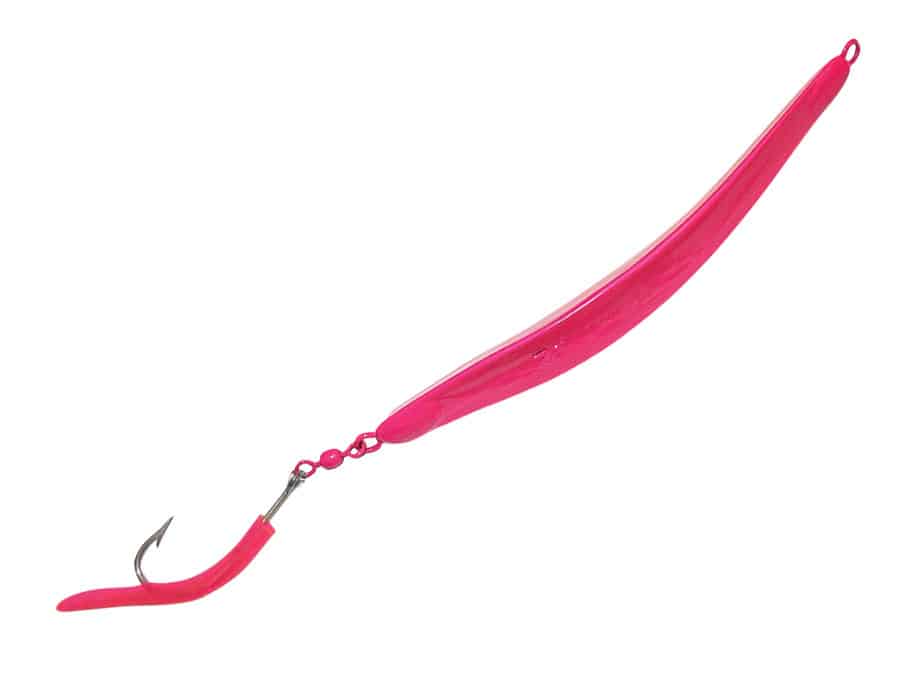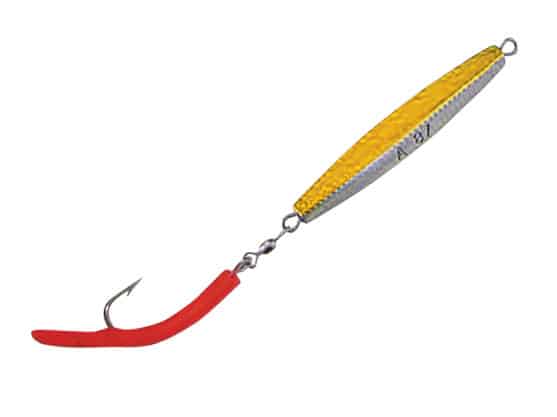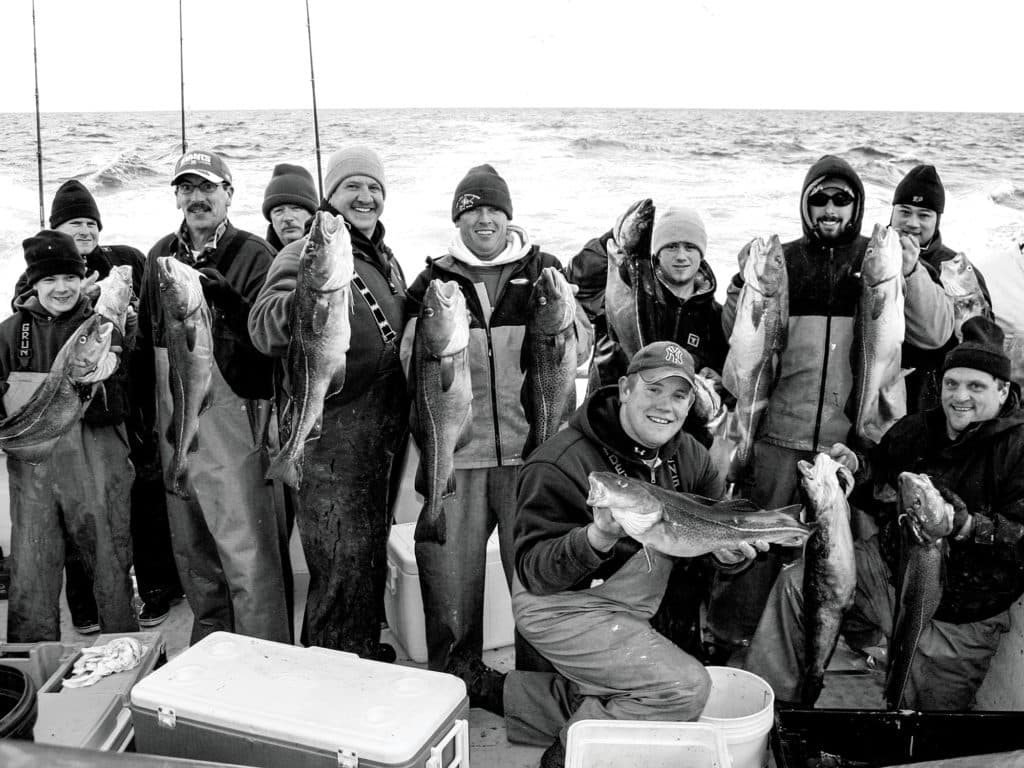
Better known as Joey Numbers, my Italian friend Joe Savare always put baccala (salted cod) on the Christmas dinner table. Baccala is delicious, and Joey’s family never missed a chance to mention, since I’m a fisherman, that I should bring the cod next time. Instead of just shrugging off their comments, some of which questioned my angling skills, I hopped on a boat and headed off the Jersey coast, hoping the fruits of the outing would silence, even if temporarily, the incessant requests for fish.
Loaded with all the necessary gear, we hit the Resor wreck, 30 miles out. Without wasting a second, I dropped a fresh clam down to the bottom and immediately reeled in a 15-pound cod sure to provide plenty of fillets for dinner at Joey Numbers’ house. Two minutes later, my cohort Jon King brought up a 36-pound pollock from 180 feet of water. When the action finally slowed, we’d filled the cooler with cod and pollock, all weighing over 8 pounds. That would have been a dream trip in Jersey waters once, but now it’s a wreck angler’s mainstay.
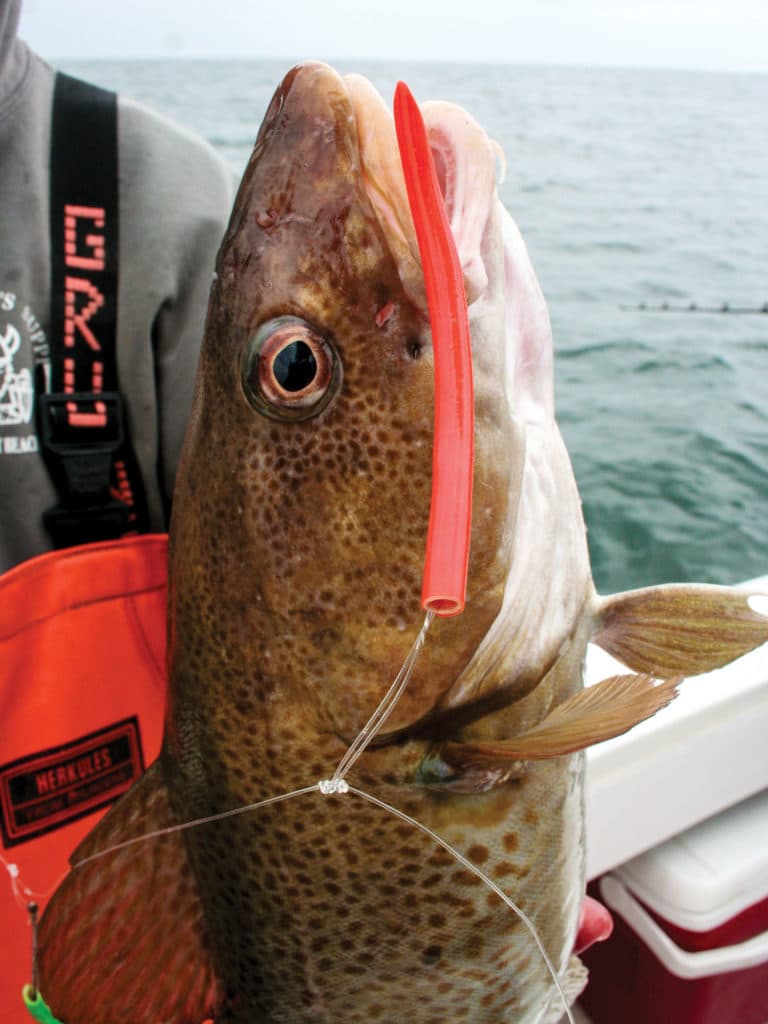
Northeast Cod and Pollock Stocks Rebound
Sometime around 2003, Atlantic cod and pollock populations started to rebound off the Garden State coast. It seems fish migrating down from the George’s Bank area repopulated the historic haunts off New Jersey, where both species have become viable targets once again. These known wreck dwellers settle inside and around shipwrecks and related debris 15 to 60 miles off the coast, with large concentrations often found from 25 to 50 miles out.
Cod Fishing Preferred Temperatures
Both cod and pollock like cold water. After a particularly cold winter, water temperatures fluctuate between 30 and 40 degrees, the fish remain active, and the spring bite off the Jersey coast is usually superb. During an average spring, when water temperatures usually range from 44 to 50 degrees, the fish stage in 120- to 150-foot depths. Come summer and fall, they move off to deeper water, taking up residence between 150 and 200 feet.
Distinctive Pollock and Cod Fishing Spots
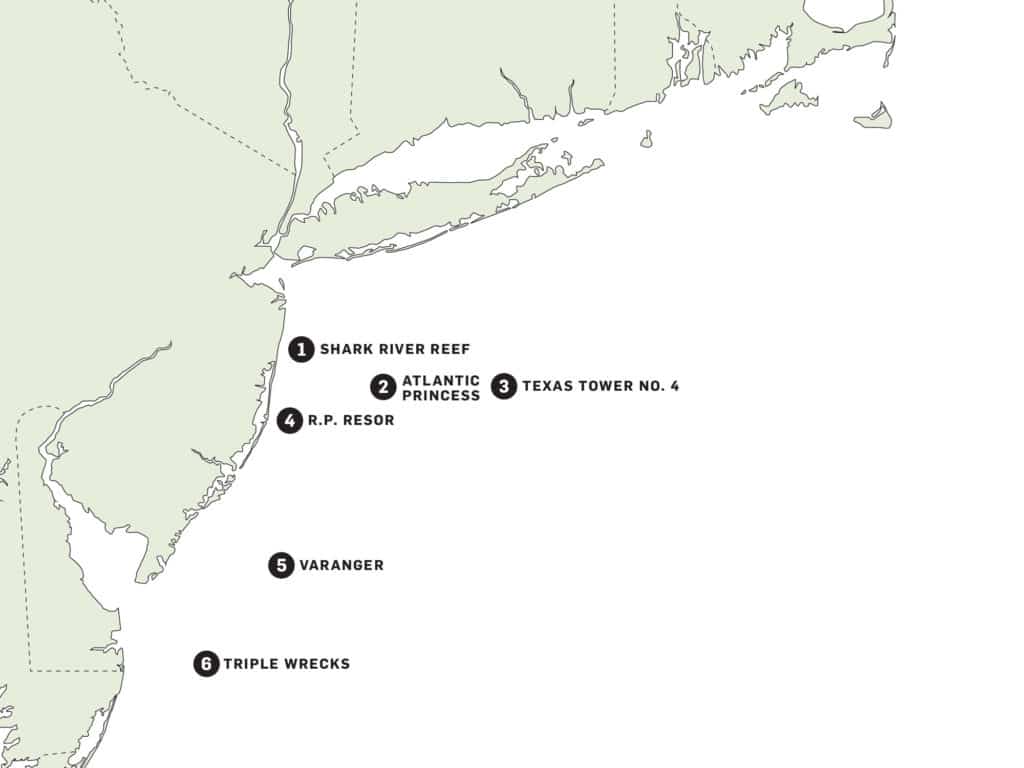
Pollock prefer to hang over high-profile wrecks where baitfish congregate in dense schools, enabling them to pick off any that stray near the structure. Cod, meanwhile, gravitate toward older, low-profile wooden shipwrecks in muddy bottom environments, especially those with lots of mussels and other mollusks, anemones, Jonah crabs, ling, bergalls, and plenty of forage already established. Larger “whale” cod — specimens in the 30- to 50-pound range — make nooks within a particular wreck their permanent homes, whereas smaller 5- to 15-pounders tend to migrate from wreck to wreck.
Best Baits for Cod Fishing
“The key is to anchor up on the right piece of structure,” says Capt. Denis Katliarov of Russian Roulette. “We don’t drift like they do in Montauk where there’s a lot of rocky bottom. Since we predominantly have sandy bottom, we pick a wreck and anchor on it, shifting around and working the primary structure and all the edges.”
Freshly shucked clams are paramount for hookups, but two schools of thought permeate the clam-bait plan. When there’s no current running, a gob of clam works well. But during full- and new-moon periods when the current runs hard, a well-manicured clam tongue, cut into a streamlined strip bait that won’t spin in the current, garners more strikes.
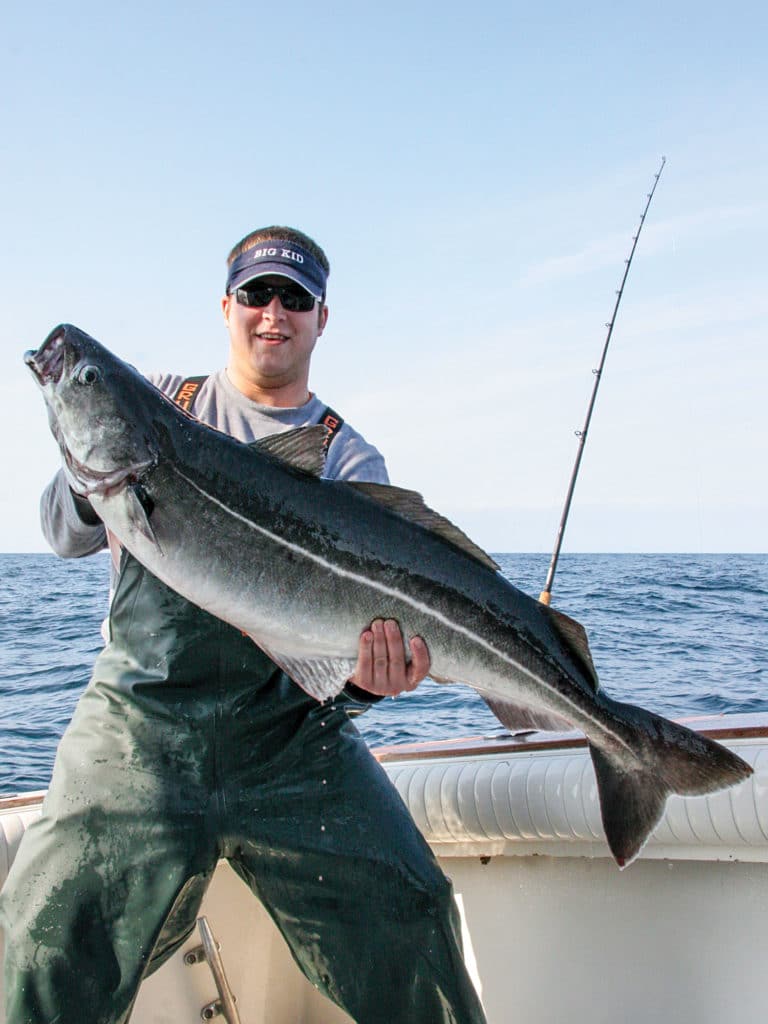
“All the cod over 40 pounds I’ve seen ate half a fresh clam tongue. It seems the cleaner the bait, the easier a cod will inhale it,” says Katliarov, who adds that shucked clam shells can also be dropped to chum up cod and incite their predatory impulses. But clams aren’t the only bait that works; mackerel, herring or bergall strip baits also do the trick. The standard go-to cod rig is a two- to three-hook dropper and high-low rig with either 6/0 bait-holder hooks or 8/0 Octopus hooks. Hooks with some added jewelry, including beads, surgical tubing, or curly tails 3 to 6 inches long, in bright colors like red, orange, hot pink, neon green or purple, out-fish bare hooks most times.
“Bling on the rig definitely helps attract cod,” Katliarov notes. The hooks with the desired adornments should be set 18 inches apart, and a bank sinker at the end completes the rig.
Cod are curious creatures. If they spy commotion in the water column, they come to investigate. So when bergalls are nipping at your baits, control your instinct to swing the rod and instead let it sit. Chances are a cod will cruise by soon, push the little fish out of the way and inhale the bait. Katliarov warns, when using bait, spiny dogfish sometimes become a nuisance. When that happens, it’s time to make a shift or move to an entirely different spot.
Fishing Jigs for Cod and Pollock
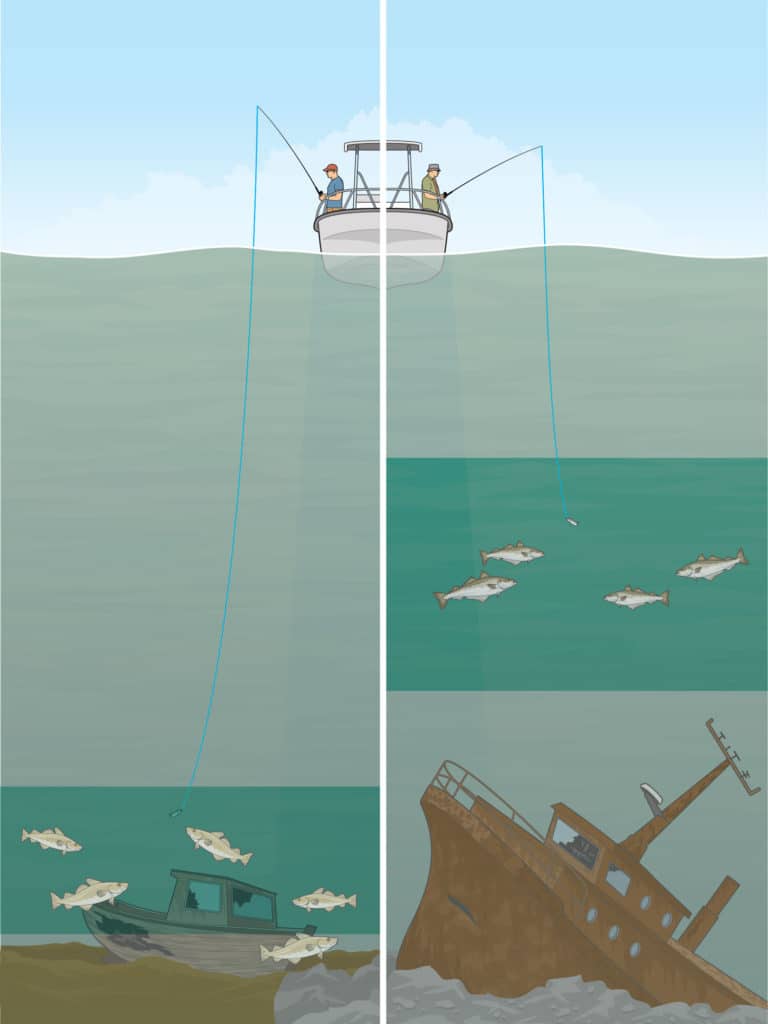
Dropping jigs for cod and pollock is insanely exciting because both species deliver knockout punches on the take. “Jigging is best when there is a lot of bait, like herring or mackerel, around,” Katliarov states. “You also need minimal current for the jig to work properly.” They key is to keep the lure in each species’ strike zone.
For cod, a slow-and-low presentation is the way to go. Since cod lie near the seafloor and mill around a wreck, patrolling to about 10 feet up, their strike zone extends from 1 to 10 feet off the bottom.
For best results, let a Luhr Jensen Crippled Herring or heavy diamond jig sink to the bottom, then bounce the jig and raise it 12 inches before letting it drop again. Cod often strike as the lure falls, so taking five or six cranks and then letting the jig flutter down also warrants its share of strikes.
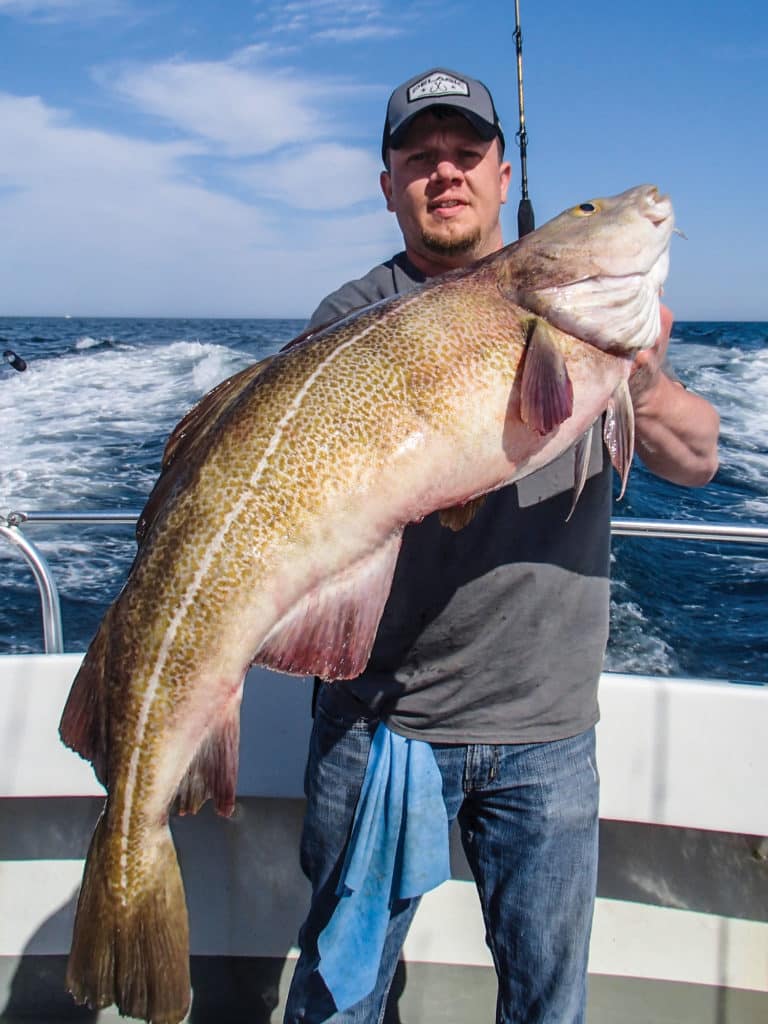
In contrast, pollock stage over a wreck, suspending as much as 30 to 60 feet above the structure. In addition, pollock are visual feeders that quickly home in on the flash and erratic action of a lure worked quickly over their heads. Therefore, snapping butterfly jigs through the water column is a great way to prospect and get attention from any fish in the area. Of course, pollock are also notorious reaction strikers, so the yo-yo method of jigging works well. Drop a Crippled Herring or similar slab jig to the bottom, then reel up as fast as possible, counting how many cranks it takes for a pollock to streak out of nowhere to hit the fleeing bait imitation. This tactic lets you pinpoint the depth at which the fish are holding. Then you just drop the jig back down to that depth and repeat the process.
In the last decade, cod and pollock fishing has rebounded considerably in Jersey waters, and anglers fishing wrecks spring through fall enjoy the spoils. All it takes is a boat, a solid set of wreck numbers, and the thought of a delectable meal of baccala on the table to motivate you.
Plan a Trip Cod Fishing in New Jersey
- What: Atlantic cod and pollock
- Where: New Jersey wrecks 15 to 60 miles out
- When: Spring through fall
- Who: Anglers with seaworthy boats rigged with chart plotters and fish finders.
- Captains: The following charter captains will put you on fish and show you the ropes. Capt. Denis Katliarov, 732-620-9072 or Capt. Jerry Postorino, 732-688-0765
Cod Fishing Tackle
- Rod: Medium to heavy 7- to 8-foot conventional with moderate action
- Reel: Fast conventional with at least a 6-to-1 retrieve ratio like the Shimano Torium 20 to 30 class or Avet MXL
- Line: 50-pound braided running line; 10-foot top shot of 50- to 60-pound mono
- Leader: 50- to 60-pound fluorocarbon
- Lures: 6- to 20-ounce Luhr Jensen Crippled Herring, hammered diamond jig, Vike jig or Ava 87 jig, rigged with red, green or orange tubing
- Terminal Tackle: 6/0 to 9/0 Octopus or bait-holder hooks; 150-pound barrel swivels; brightly colored surgical tubing, 3- to 6-inch curly-tail grubs or beads; 6- to 20-ounce bank sinkers
Best Jigs for Cod and Pollock
A number of flutter jigs and irons trick both cod and pollock.
